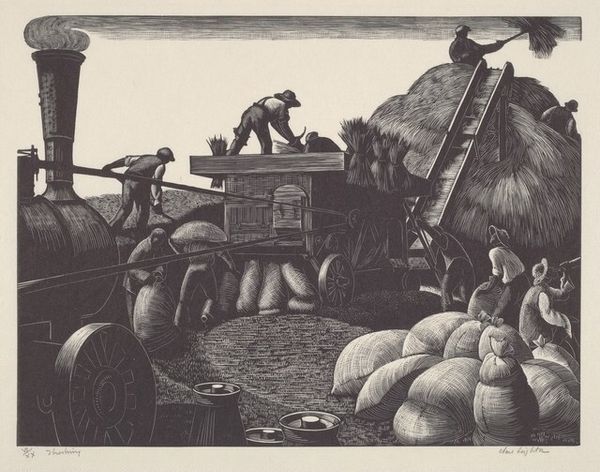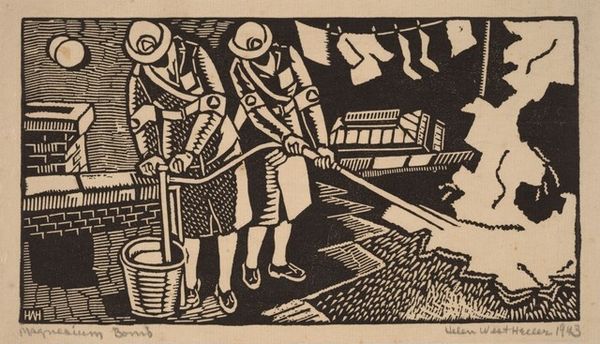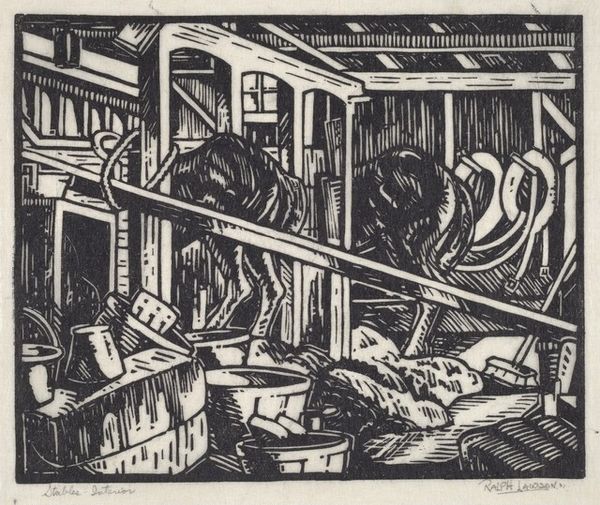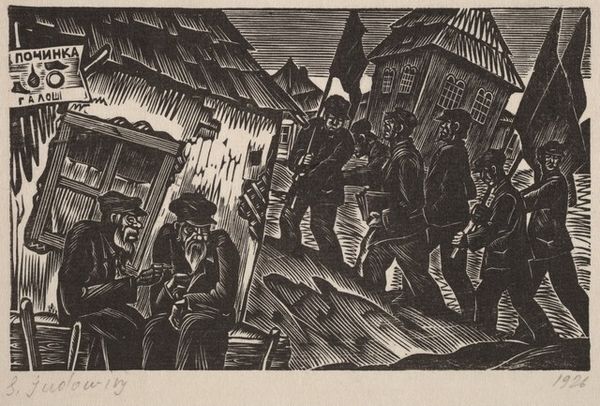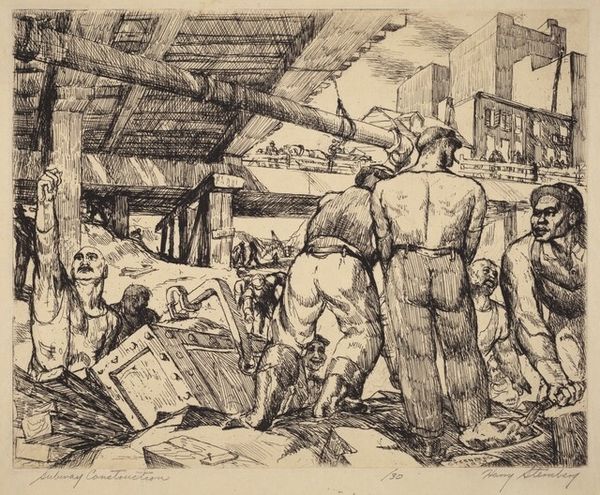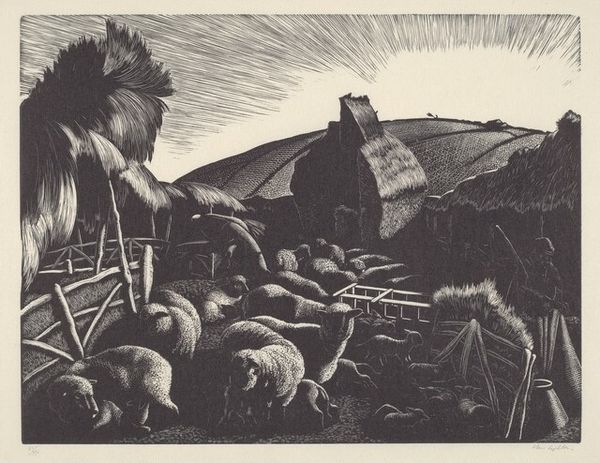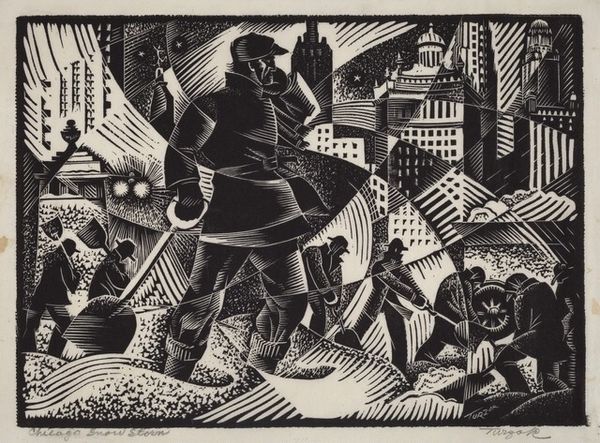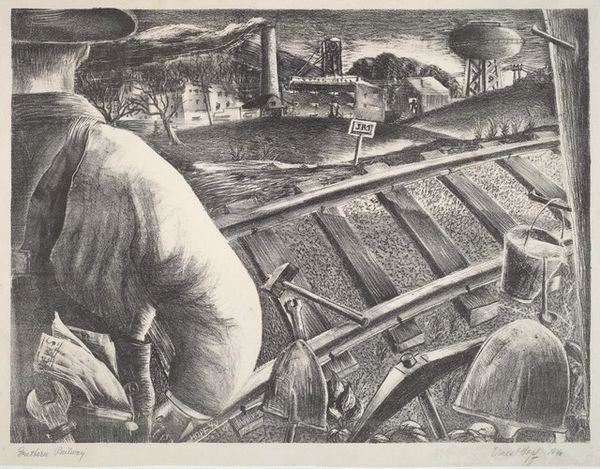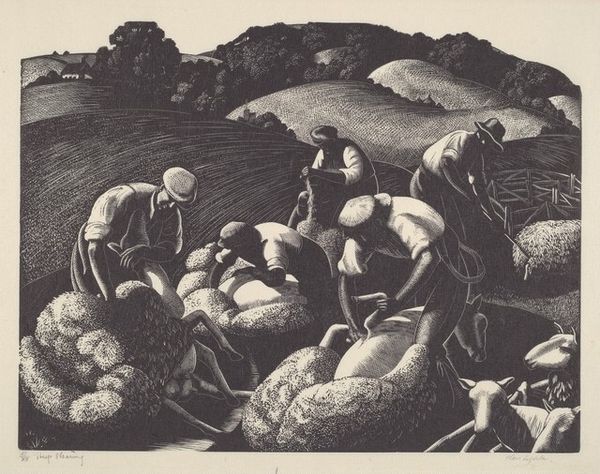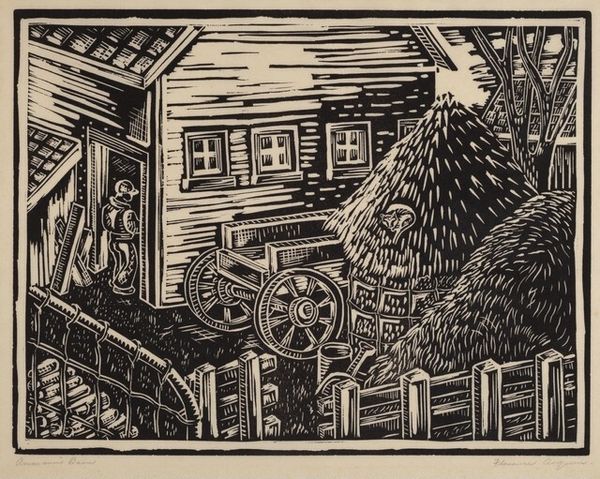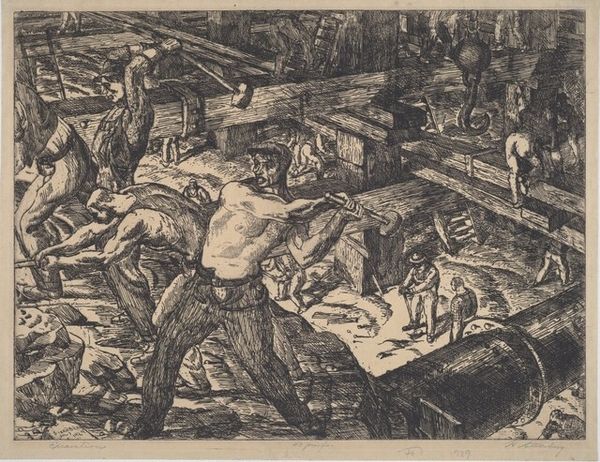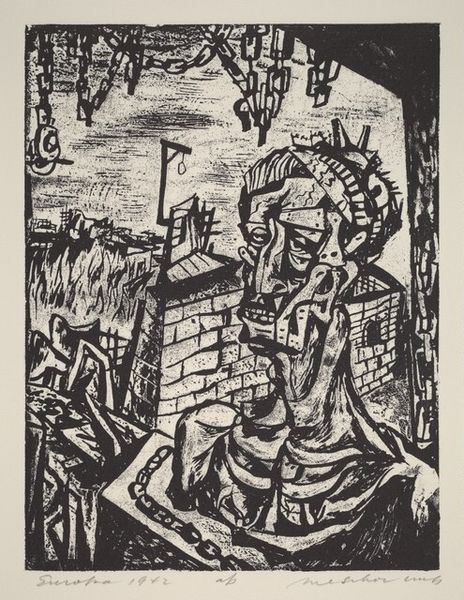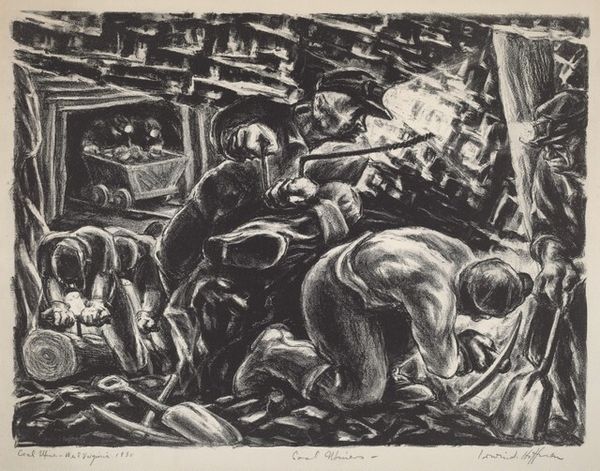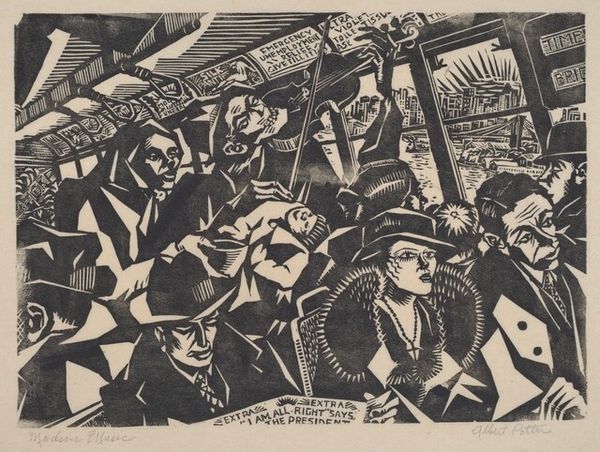
print, woodcut
# print
#
figuration
#
social-realism
#
woodcut
#
cityscape
#
genre-painting
#
realism
Dimensions: image: 241 x 330 mm paper: 276 x 359 mm
Copyright: National Gallery of Art: CC0 1.0
Curator: Let’s turn our attention to "East Side Market," a woodcut print created in 1939 by Murray Altshuler. What's your immediate impression? Editor: Stark. The high contrast between the black ink and the paper gives it a gritty, almost urgent feel. It’s a scene bustling with activity, but captured with a very constrained palette. Curator: Precisely. The woodcut technique lends itself well to depicting the daily grind. Notice how Altshuler uses thick, decisive cuts to define forms – look at the rough texture of the brickwork, for example. This would have been a relatively accessible medium. Prints allowed for wider circulation, echoing the democratizing ethos often found within Social Realism. Editor: I’m drawn to the symbolic weight of the scale hanging above the produce. Is it merely a practical object for weighing goods, or does it represent something more? Perhaps a weighing of one's life, balancing necessity and morality within difficult times? Curator: Interesting. Altshuler worked in New York City, which, in 1939, was reeling from the Depression. The materiality of a print meant it was more democratic and accessible during that era, something more in line with his leftist and Labor sympathies. It was literally easier for regular folks to "consume" this form of artwork. Editor: And the bowler hats! What do they signify? A sense of urban uniformity? Even the common worker aspired to this attire, hoping it conveyed respectability, masking hardship beneath a veneer of middle-class life? Curator: Quite possibly. They also add to the image's graphic quality – repeating dark shapes punctuating the scene. It shows that it would be available for a much broader audience that wouldn't normally purchase "high art," speaking about workers' struggle in familiar visual language, literally within their price range. Editor: Looking at how he renders the figures, huddled together, almost anonymous… and yet, the act of bartering, buying, and selling--it’s so essential. Food, survival – the universal symbols. Curator: Yes, food production and distribution; we’re seeing human beings within systems of labor and sustenance, reminding us about everyday actions and relationships between humans and the means of production and trade. The market becomes more than just a marketplace but the locus of collective need and a potent symbol of social interconnectedness. Editor: In the end, this print offers an unvarnished glimpse into a particular moment in time—a fusion of daily toil and resilience captured with great graphic punch. Curator: Right. And through his chosen material of printmaking and stark portrayal, Altshuler transforms a mundane scene into an accessible piece that embodies broader social concerns about access and social realities.
Comments
No comments
Be the first to comment and join the conversation on the ultimate creative platform.
